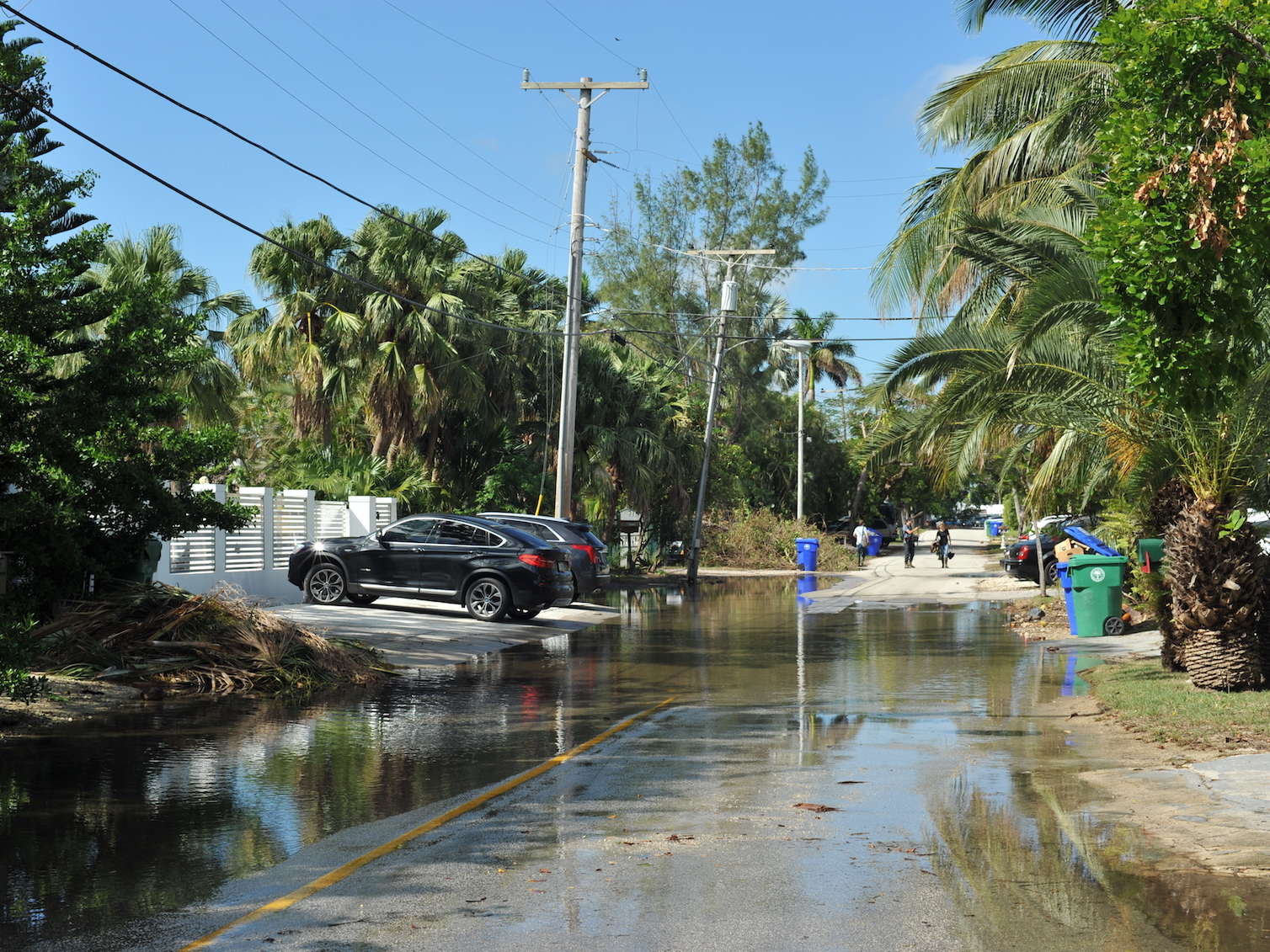Sea level rise is threatening coastal cities around the world.
If you live in a city like Miami, New York City, or Charleston, the evidence is apparent if you head to the right neighborhood during high tides – especially those known as king tides. These are the highest tides of the year, and they coincide with full moons during spring and fall.
King tides themselves aren’t caused by sea level rise, but as the highest tides of the year, they show how sea level has already risen over the past century – the neighborhoods they flood on sunny days now didn’t flood like this decades ago, even during high tides.
In 2017, the National Oceanic and Atmospheric Administration (NOAA) found that cities around the country experienced a record number of flooding events related to high tides, according to the National Climate Report. More than a quarter of coastal locations tied or set new records for the number of flooding days. And in 2018, flooding on the US coastline is expected to be 60% higher than it was just 20 years ago.
Perhaps most importantly, high and king tides are a preview of what's to come as seas continue to rise. What happens during high tides now will happen on a regular basis in the future.
As sea level rises, waters come back up through storm drains and wash over barricades. They flood houses and roads. And in many cases, they may be full of bacteria and potential pathogens.
Most cities recognize the situation at this point and are doing everything they can to try to beat back the rising tides. But seas will continue to rise as warmer oceans expand and glaciers melt. It's likely that neighborhoods and even some cities will be uninhabitable far sooner than many think.
Annapolis, Maryland: Sea level is rising faster along the East Coast than in many places. In Annapolis, tides can cause the Chesapeake Bay to flood the city.

Seattle, Washington: King tides sometimes cause Puget Sound to rise to discomforting levels in Seattle, as is shown here in 2011.

Boston, Massachusetts: Boston set a new record for the number of flooding days the city experienced in 2017, with higher sea levels making high tide flooding more common, especially when storms were in the area.

Miami, Florida: Miami and other cities in Florida are experiencing some of the most severe sea level rise and tidal flooding.

Miami, Florida: In the last 10 years, flooding events have increased in frequency by 400% in Florida.

In Miami, the sea level has risen about 10 inches from 1900 to today. But it's expected that sea level there will be up to 17 inches higher than 1900 by 2030 and 86 inches higher than 1900 by the end of this century. Some geologists think those projections are far too low.
Galveston, Texas: Galveston set another record for most flooding days in 2017, along with Boston; Sabine Pass, Texas; and Atlantic City and Sandy Hook in New Jersey.
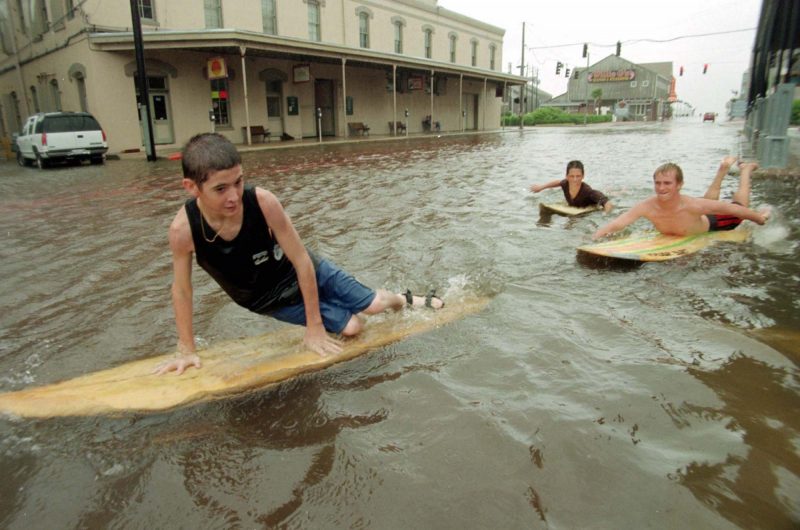
Miami Beach, Florida: Miami Beach is trying to engineer solutions to sea level rise, installing pumps and raising roads and buildings.

Miami Beach, Florida: Many experts think much of South Florida will be underwater by the end of the century, especially if global emissions aren't rapidly cut.

Hollywood, Florida: People often have to navigate flooded roads in Florida.
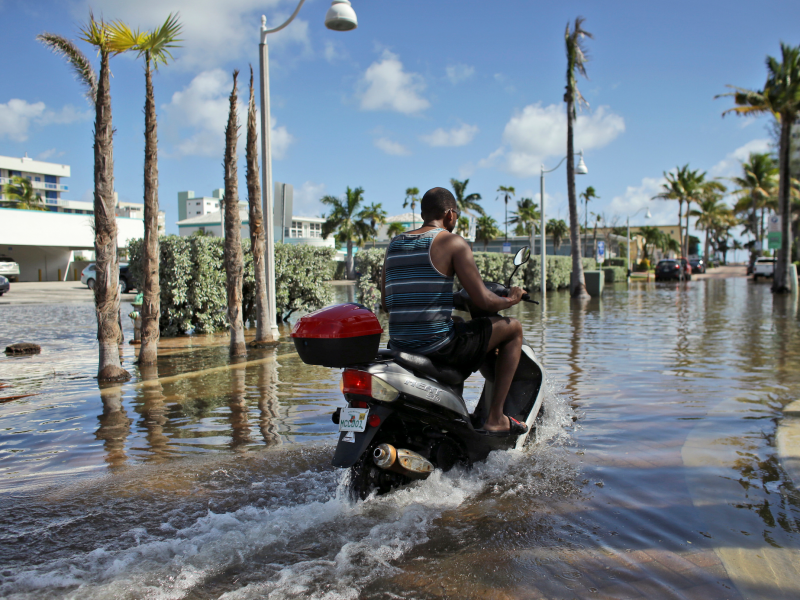
Broad Channel, Queens, New York: In parts of New York City, tidal flooding fills the streets once a month, sometimes more frequently.

San Francisco, California: Many places haven't seen dramatic flooding yet, but high tides combined with recent weather show how quickly waters can spill over the walls.

Norfolk, Virginia: Floods in the Norfolk and Hampton Roads area threaten to make the largest naval base in the world inaccessible.
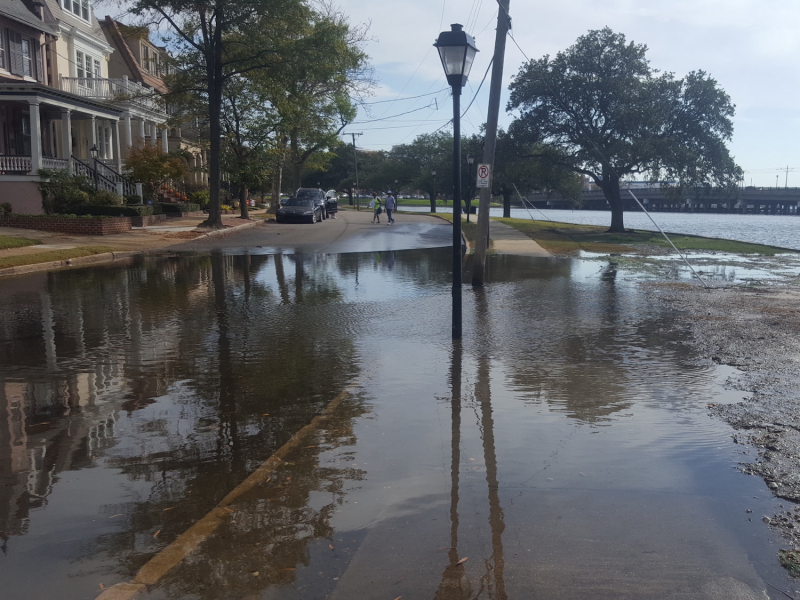
Hampton Roads, Virginia: It's possible that the base — and the jobs that come with it — will have to be moved.
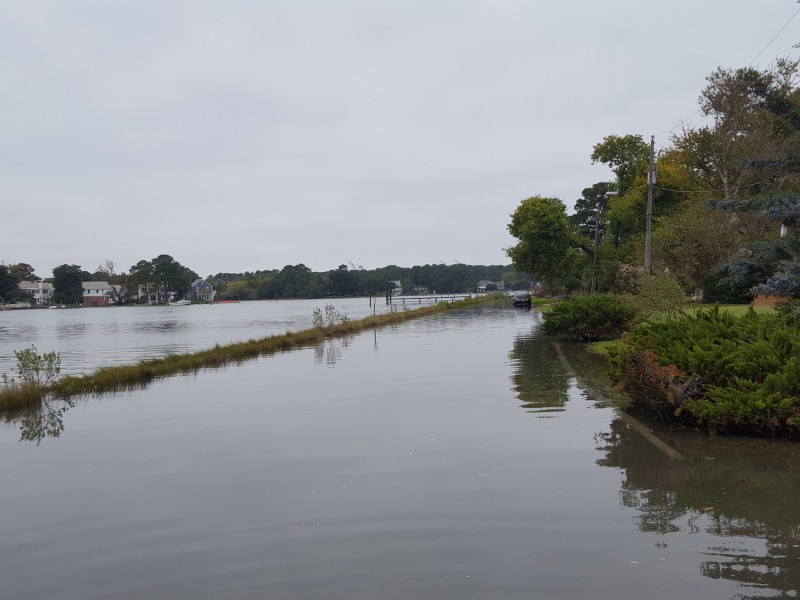
Hampton, New Hampshire: Some neighborhoods and cities can be protected for a time with environmental restoration procedures or engineering solutions. But in other places, people will eventually have to retreat.


